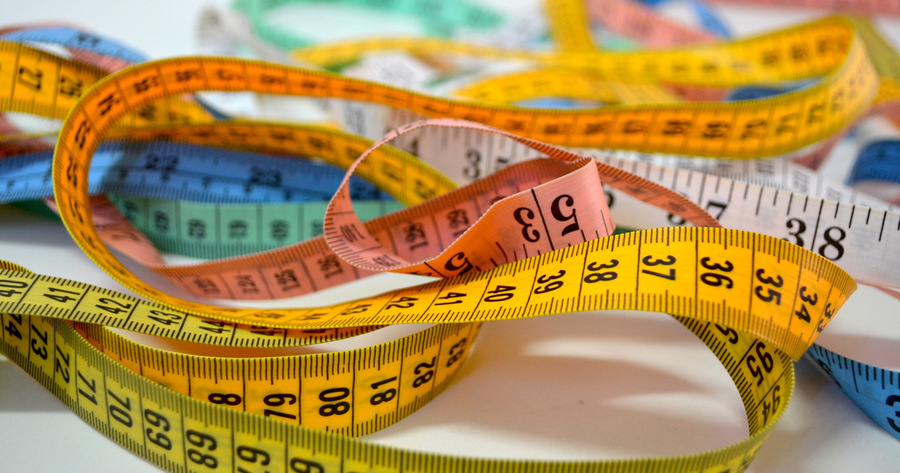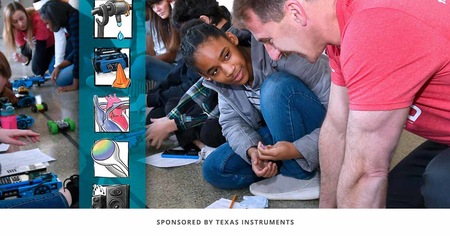It's also an exceedingly easy skill to teach and practice.
Research shows, however, that the skill is deteriorating.
More and more, screen time is taking time away from hands-on activities where measuring and estimating are naturally developed. A recent study in the United Kingdom showed that a young person's ability to estimate sizes has gone down two grade levels since the 1970s.
The good news?
This skill erosion can easily be reversed.
Learning to measure is a fun, hands-on activity—one that can be affordably practiced almost anywhere with some simple tools. Afterschool program spaces are filled to the brim with fun things to measure. All you need are rulers, measuring cups and scales. Yet measuring is taught less than you would imagine in afterschool, due to a stumbling block.
Units of Measurement
There's one key question educators must ask before beginning to measure with their young people:
Which edge of the ruler do you use?
In the United States, rulers—and nearly all other types of measuring equipment—come with two scales.
- A metric scale based on the International System of Units.
- A customary unit scale based on the old English Imperial system.
"Which edge of the ruler do you use?" creates uncertainty and confusion in informal education. Most people understand that in science, the metric system is preferred. Yet go to any hardware store and you'll find everything in feet and inches.
It's all very confusing.
Then, there's the math.
If you challenge young people to work out the length of the perimeter of a rectangle, would you rather they measure and do the math for a rectangle that is 1 3/16 inches high by 4 3/4 inches long, or a rectangle of the same size that is 3 cm by 12 cm?
Which is easier?
1 3/16 + 4 3/4 + 1 3/16 + 4 3/4
3 + 12 + 3 + 12
Spoiler alert! It's a lot easier to do math on measurements that use units of 10, rather than the seemingly nonstandard "voodoo" of customary units.
If you grew up in a decimal world, customary units feel unwieldy and overcomplicated. In customary units there, are nine different meanings for the word "ton." "Ounces" can mean "weight" or "volume." By any measure, customary units are complicated.
They are, however, friendly and familiar.
Many afterschool educators are easily able to estimate the length of an inch or a foot, but centimeters and meters will leave them guessing. It's confusing and—in some cases—dangerous. In 1999, NASA sent a $125 million probe all the way to Mars, where it promptly crashed into the surface because one system provided numbers in customary units that were interpreted by another system in metric. The Centers for Disease Control and Prevention (CDC) estimates that 3,000 to 4,000 young people are sent to the emergency room per year due to unit conversion measurement errors.
To understand how we got into this mess, we need to take a look at history.
A History of Two Measuring Systems: The Birth of the Metric System
When measurements first started, people used things that were handy—such as their hands and other body parts. This gave rise to classic measurements, such as the foot.
Quick: Grab a friend and compare your feet.
Are they the same size?
There are obviously some problems with this method.
As civilization civilized and trade became more important, different regions began to standardize measurements. This led to different standards being set in different areas. For example, it's common knowledge that the French emperor Napoleon was short.
But was he?
Napoleon's height was recorded as 5 feet 2 inches. In Britain, at war with France during Napoleon's time, his height was considered—rather rudely—to be laughably short and the British made a lot of fun of their short adversary.
What's not mentioned?
During Napoleon's time, the French inch was longer than the British inch. In British inches, Napoleon was 5 feet 6 inches—about average height for his time.
Discrepancies in measurements were often used by disreputable shopkeepers to help pad their pockets, leading to a general distrust of measurements by the public. After Napoleon, the French Revolution tore down the customs and traditions that separated the poor from the rich. The new government, in sweeping changes toward a more equitable system, set about replacing all the old untrusted units of measurement with a new universal system based on two verifiable solid standards:
- The meter.
- The kilogram.
This created the metric system—a system for the people—where all the measurements were based on units of 10.
Sounds like a great idea! But if the new metric system was so brilliant, why wasn't it immediately embraced by the rest of the world?
Well, in a word or two: the British.
The United States Doesn't Use the Metric System Because of British Pirates
Still stinging from the war with Napoleon and other political tensions, Britain was not going to adopt a French idea, no matter how good it was. This meant the vast British Empire trudged on in imperial units while the smaller, yet still big French Empire promoted the metric system.
The world as a whole was divided into two systems. Amidst this, a new country—the United States of America—won its independence and set about choosing a measurement system.
George Washington appointed Secretary of State Thomas Jefferson to standardize weights and measurements. Jefferson was a fan of French thinking, but when an envoy from France traveled to America with copies of the physical standards of the meter and the kilogram, British pirates robbed him and the standards were lost.
Facing a costly trip back to France and an increasingly tense political situation with France, the U.S. decided to simply standardize the measurements that were already in use based on the British imperial system.
This has had far-reaching consequences.
The simplicity and ease of use of the metric system slowly gained traction. More and more countries saw its value and made it their standard. Today, only three countries don't use the metric system:
- Liberia
- Myanmar
- The United States of America
Britain finally let go if its grudge and made the metric system its official standard in 1965. Admittedly, it took the British another 44 years to finally complete the change to metric. Today, only pints of beer, car speeds and distances remain in imperial units. Everything else—from the weather to the supermarket and hardware store—is metric.
The U.S. is still in limbo.
In 1866, Congress made it legal to use metric measurements. Later, the world internationally agreed the absolute standards for global measurement would be the meter and the kilogram. While we still use feet and pounds, since 1959 all other measurements are officially based on metric standards.
In 1975, the U.S. made another attempt to switch to metric, but the law that was introduced was voluntary. Quoting costs, many business and institutions decided not to switch, leaving us where we are today: buying liters of soda and pints of milk.
The U.S. straddles both systems, its soft metric system interlaced with the traditional customary units.
In an effort to avoid short-term confusion and expense, the inevitable creep of the metric system has actually made everything a lot more difficult.
An Educator's Role
As an educator of young people, you are on the front line of this confusion. Measuring and estimating are vital skills to have, but which system should you teach your young people? It's a simple reality.
Young people in the U.S. need to have an understanding of both systems.
Luckily, U.S. measuring tools are labeled with both units, so you can easily provide practice with both systems.
While it may be a little unfamiliar to you, I encourage you to start with the metric system. It is simpler to use and learn and the math is a lot simpler. It is used exclusively in STEM fields and more and more in everyday life. As technology shrinks the world, I'm positive Liberia, Myanmar and the U.S. will be unable to convince the rest of the world to step back to 1/16 of inch and a coal ton.
Start your young people with meters and kilograms—even if you're learning alongside them. You have a fantastic opportunity to layer in a little social-economic history by contrasting the metric system with the everyday units that surround young people at home.
Whatever you, don't shy away from making measurements with young people. It's an important interdisciplinary hands-on skill that will last a lifetime.
Written by Andy the Science Wiz, NAA STEM Specialist Andy Allan.




